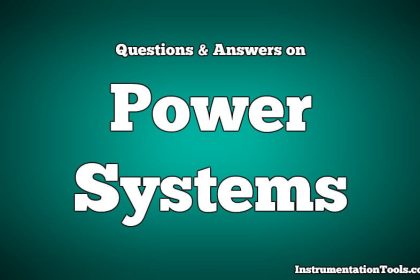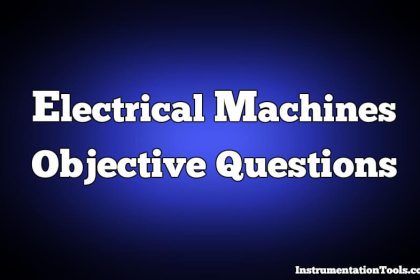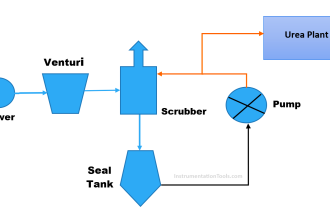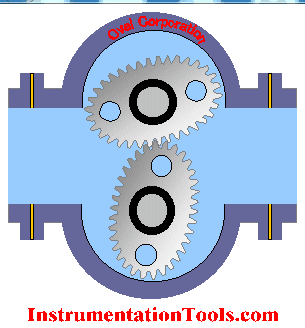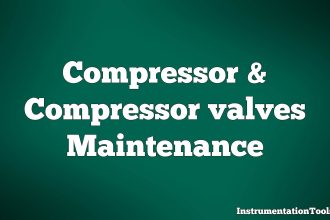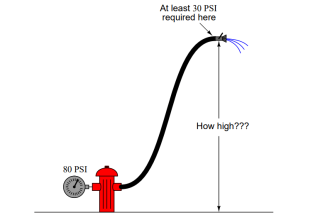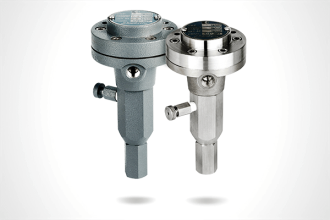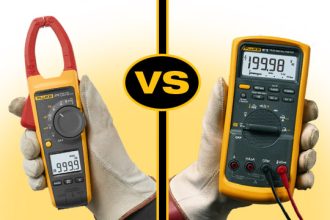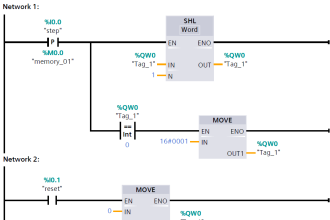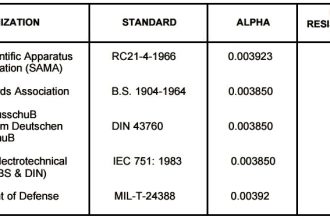In this article, we shared the electrical traction multiple choice questions and answers for electrical and electronics engineers.
Electrical Traction Multiple Choice Questions

The below list provides all the objective questions and answers related to electrical traction.
Answers are available at the bottom of the article.
1. For a 25 KV single-phase system power supply frequency is
| A) | 25 Hz |
| B) | 60 Hz |
| C) | 10 Hz |
| D) | 50 Hz |
2. Locomotives with monometer bogies have
| A) | suitability for the passenger as well as freight service |
| B) | uneven distribution of tractive effect |
| C) | lot of skidding |
| D) | low co-efficient of adhesion |
3. In the case of a steam engine an average coal consumption per km is nearly
| A) | 28 to 30 kg |
| B) | 150 to 175 kg |
| C) | 60 to 80 kg |
| D) | 100 to 120 kg |
4. The voltage used for suburban trains in the D.C. system is usually
| A) | 12 V |
| B) | 220 V |
| C) | 600 to 750 V |
| D) | 24 V |
5. The horsepower of steam locomotives is
| A) | 2000 to 3000 |
| B) | 1500 to 2000 |
| C) | 3000 to 4000 |
| D) | upto 1500 |
6. The speed of a locomotive is controlled by
| A) | regulating steam flow to engine |
| B) | flywheel |
| C) | gear box |
| D) | applying brakes |
7. Which of the following track is electrified
| A) | Delhi – Bombay |
| B) | Delhi – Ahmedabad |
| C) | Delhi – Madras |
| D) | Delhi – Howra |
8. Overload capacity of diesel engines is usually restricted to
| A) | 10 percent |
| B) | 40 percent |
| C) | 2 percent |
| D) | 20 percent |
9. Electric locomotives in India are manufactured at
| A) | Gorakhpur |
| B) | Jamalpur |
| C) | Chittranjan |
| D) | Bangalore |
10. The braking retardation is usually in the range
| A) | 0.30 to 0.6 km phps |
| B) | 10 to 15 km phps |
| C) | 0.15 to 0.30 km phps |
| D) | 3 to 5 km phps |
| E) | 0.6 to 2.4 km phps |
11. Due to which of the following co-efficient of adhesion improves?
| A) | Dust on the rails |
| B) | all of these answers |
| C) | Sand on the rails |
| D) | Rust on the rails |
12. In a steam locomotive electric power is provided through
| A) | diesel engine generator |
| B) | small turbo-generator |
| C) | overhead wire |
| D) | battery system |
13. The normal value of adhesion friction is
| A) | 0.75 |
| B) | 0.12 |
| C) | 0.4 |
| D) | 0.25 |
14. Energy consumption in propelling the train is required for which of the following?
| A) | Acceleration |
| B) | Work against the resistance to motion |
| C) | All of these answers |
| D) | Work against gravity while moving up the gradient |
15. ____ was the first city in India to adopt electric traction.
| A) | Calcutta |
| B) | Delhi |
| C) | Madras |
| D) | Bombay |
16. ____ watt-hours per tonne-km is usually the specific energy consumption for suburban services.
| A) | 160-200 |
| B) | 15-20 |
| C) | 50-75 |
| D) | 120-150 |
17. In main line service as compared to urban and suburban service
| A) | maximum speed reached is high |
| B) | acceleration and retardation rates are low |
| C) | distance between the stops is more |
| D) | all of these answers |
18. The friction at the track is proportional to
| A) | speed |
| B) | 1/speed |
| C) | none of the answers |
| D) | 1/(speed)2 |
19. Which of the following is the disadvantage of electric traction over other systems of traction?
| A) | High capital outlay in fixed installations beside route limitation |
| B) | Short time power failure interrupts traffic for hours |
| C) | Interference with communication lines |
| D) | All of these answers |
| E) | Corrosion problems in the underground pipe work |
20. Which of the following is an advantage of electric traction over other methods of traction?
| A) | All of these answers |
| B) | No pollution problems |
| C) | Faster acceleration |
| D) | Better braking action |
21. Main traction systems used in India are those using
| A) | diesel electric locomotives |
| B) | diesel engine locomotives |
| C) | all of these answers |
| D) | steam engine locomotives |
| E) | electric locomotives |
22. Battery operated trucks are used in
| A) | narrow gauge traction |
| B) | factories for material transportation |
| C) | steel mills |
| D) | power stations |
23. For which of the following locomotives the maintenance requirements are the least?
| A) | Diesel locomotives |
| B) | all of these answers |
| C) | Electric locomotives |
| D) | Steam locomotives |
24. Suri transmission is ____
| A) | mechanical-electrical |
| B) | hydro-pneumatic |
| C) | electrical-pneumatic |
| D) | hydro-mechanical |
25. Vacuum created by which of the following?
| A) | Ejector |
| B) | None of these answers |
| C) | Vacuum pump |
| D) | Any of the answers |
26. For diesel locomotives the range of horsepower is
| A) | 3000 to 5000 |
| B) | 500 to 1000 |
| C) | 1500 to 2500 |
| D) | 50 to 200 |
27. For 600 V D.C. line for tramcars track is connected to
| A) | mid voltage of 300 V |
| B) | negative of the supply |
| C) | positive of the supply |
| D) | none of these answers |
28. Which of the following braking systems ‘is used on steam locomotives?
| A) | Vacuum system |
| B) | Pneumatic system |
| C) | None of these answers |
| D) | Hydraulic system |
29. In the case of steam engines the steam pressure is
| A) | 5 to 8 kgf /cm2 |
| B) | 25 to 35 kgf /cm2 |
| C) | 10 to 15 kgf /cm2 |
| D) | 1 to 4 kgf /cm2 |
30. The efficiency of diesel locomotives is nearly
| A) | 20 to 25 percent |
| B) | 30 to 40 percent |
| C) | 60 to 70 percent |
| D) | 45 to 55 percent |
31. In India electrification of railway track was done for the first time in which of the following years
| A) | 1820-1825 |
| B) | 1880-1885 |
| C) | 1925-1932 |
| D) | 1947-1954 |
32. Co-efficient of adhesion is
| A) | equal in both A.C. and D.C. traction |
| B) | any of these answers |
| C) | high in case of D.C. traction than in the case of A.C. traction |
| D) | low in case of D.C. traction than in the case of A.C. traction |
33. The steam engine provided on steam locomotives is
| A) | double acting non-condensing type |
| B) | double acting condensing type |
| C) | single acting non-condensing type |
| D) | single acting condensing type |
34. The pulsating torque exerted by steam locomotives causes which of the following?
| A) | All of these answers |
| B) | Jolting and skidding |
| C) | Hammer blow |
| D) | Pitching |
35. Which of the following methods is used to control the speed of 25 kV, 50 Hz single-phase traction?
| A) | Reduced current method |
| B) | Series parallel operation of motors |
| C) | All of these answers |
| D) | Tap changing control of transformer |
36. Tractive effort is required to
| A) | all of these answers |
| B) | overcome the gravity component of train mass |
| C) | overcome friction, windage and curve resistance |
| D) | accelerate the train mass |
37. Which of the following happens in Kando system?
| A) | Single phase A.C. is converted into D.C. |
| B) | Single phase supply is converted into three phase system |
| C) | Three phase AC. is converted into D.C. |
| D) | None of these answers |
38. Power for lighting in a passenger coach in a long-distance electric train is provided
| A) | through locomotive |
| B) | through individual generator of bogie and batteries |
| C) | directly through overhead electric line |
| D) | through rails |
39. ____ frequency is not common in low-frequency traction system
| A) | 25 Hz |
| B) | 16 2/3 Hz |
| C) | none of these answers |
| D) | 40 Hz |
40. In tramways which of the following motors is used?
| A) | A.C. three phase motor |
| B) | D.C. series motor |
| C) | A.C. single phase capacitor start motor |
| D) | D.C. shunt motor |
41. Specific energy consumption is affected by which of the following factors?
| A) | Gradient |
| B) | Retardation and acceleration values |
| C) | Distance between stops |
| D) | All of these answers |
42. The return circuit for tramcars is through
| A) | cables |
| B) | rails |
| C) | common earthing |
| D) | neutral wire |
43. Which of the following is the advantage of electric braking?
| A) | It avoids wear of track |
| B) | Motor continues to remain loaded during braking |
| C) | More heat is generated during braking |
| D) | It is instantaneous |
44. The rate of acceleration on suburban or urban service is in the range
| A) | 1.6 to 4.0 km phps |
| B) | 5 to 10 km phps |
| C) | 15 to 25 km phps |
| D) | 0.2 to 0.5 km phps |
45. The specific energy consumption of a train depends on which of the following?
| A) | Distance covered |
| B) | All of these answers |
| C) | Acceleration and retardation |
| D) | Gradient |
46. Speed-time curve of main line service differs from those of urban and suburban services on the following account
| A) | accelerating and breaking periods are comparatively smaller |
| B) | it has longer coasting period |
| C) | all of these answers |
| D) | it has longer free running period |
47. ____ method can bring the locomotive to a dead stop.
| A) | None of these answers |
| B) | Plugging braking |
| C) | Regenerative braking |
| D) | Rheostatic braking |
48. In the case of ____ free running and coasting periods are generally long.
| A) | all of these answers |
| B) | main-line service |
| C) | sub-urban service |
| D) | urban service |
49. Specific energy consumption is least in ____ service.
| A) | any of these answers |
| B) | suburban |
| C) | urban |
| D) | main line |
50. For a given maximum axle load tractive efforts of A.C. locomotive will be locomotive
| A) | more than that of D.C. locomotive |
| B) | equal to that of D.C. locomotive |
| C) | none of these answers |
| D) | less than that of D.C. |
51. For three-phase induction motors which of the following is the least efficient method of speed control?
| A) | Pole changing |
| B) | Rheostatic control |
| C) | Combination of cascade and pole changing |
| D) | Cascade control |
52. Series motor is not suitable for traction duty due to which of the following account?
| A) | Less current drain on the heavy load torque |
| B) | Current surges after temporary switching off the supply |
| C) | Commutating property at heavy load |
| D) | Self relieving property |
53. Which of the following state capitals is not on the broad gauge track?
| A) | Bhopal |
| B) | Jaipur |
| C) | Chandigarh |
| D) | Lucknow |
54. The speed of a superfast train is
| A) | 60 kmph |
| B) | more than 100 kmph |
| C) | 100 kmph |
| D) | 75 kmph |
55. Locomotive having monomotor bogies
| A) | are suited both for passenger as well as freight service |
| B) | has better co-efficient of adhesion |
| C) | all of these answers |
| D) | has better riding qualities due to the reduction of lateral forces |
56. ____ have maximum unbalanced forces
| A) | Steam locomotives |
| B) | Diesel shunters |
| C) | Diesel locomotives |
| D) | Electric locomotives |
57. Quadrilateral speed-time curve pertains to which of the following services?
| A) | Sub-urban service |
| B) | Urban service |
| C) | Main line service |
| D) | Urban and sub-urban service |
58. Which of the following drives is suitable for mines where explosive gas exists?
| A) | Steam engine |
| B) | Any of these answers |
| C) | Battery locomotive |
| D) | Diesel Engine |
59. If the co-efficient of adhesion on dry rails is 0.26, which of the following could be the value for wet rails?
| A) | 0.3 |
| B) | 0.26 |
| C) | 0.225 |
| D) | 0.16 |
60. Specific energy consumption becomes
| A) | more on steeper gradient |
| B) | less if distance between stops is more |
| C) | all of these answers |
| D) | more with high train resistance |
61. Automatic signaling is used for which of the following trains?
| A) | Suburban and Urban electric trains |
| B) | Mail and express trains |
| C) | All trains |
| D) | Superfast trains |
62. Overhead lines for power supply to tramcars are at a minimum height of
| A) | 10 m |
| B) | 6 m |
| C) | 20 m |
| D) | 3 m |
63. The wheels of a train, engine as well as bogies, are slightly tapered to
| A) | facilitate braking |
| B) | reduce friction |
| C) | facilitate in taking turns |
| D) | increase friction |
64. The overall efficiency of a steam locomotive is around
| A) | 15 to 20 percent |
| B) | 5 to 10 percent |
| C) | 25 to 35 percent |
| D) | 35 to 45 percent |
65. An ideal traction system should have
| A) | equipment capable of withstanding large temporary loads |
| B) | all of these answers |
| C) | easy speed control |
| D) | high starting tractive effort |
66. The number of passenger coaches that can be attached to a diesel engine locomotive on the broad gauge is usually restricted to
| A) | 10 |
| B) | 14 |
| C) | 17 |
| D) | 5 |
67. _____ is the method of braking in which motor armature remains connected to the supply and draws power from it producing torque opposite to the direction of motion.
| A) | none of these answers |
| B) | Plugging |
| C) | Rheostatic braking |
| D) | Regenerative braking |
68. In India diesel locomotives are manufactured at
| A) | Ajmer |
| B) | Jamalpur |
| C) | Varanasi |
| D) | Bangalore |
69. The air resistance to the movement of the train is proportional to
| A) | speed |
| B) | speed3 |
| C) | speed2 |
| D) | 1/speed |
70. Co-efficient of adhesion reduces due to the presence of which of the following?
| A) | Sand on rails |
| B) | Dew |
| C) | Oil on the rails |
| D) | both Dew and Oil on the rails |
71. The value of co-efficient of adhesion will be high when rails are
| A) | greased |
| B) | wet |
| C) | cleaned with sand |
| D) | sprayed with oil |
72. In the case of locomotives the tractive power is provided by
| A) | double cylinder, single acting steam engine |
| B) | double cylinder, double acting steam engine |
| C) | single stage steam turbine |
| D) | single cylinder double acting steam engine |
73. Long-distance railways use which of the following?
| A) | 25 KV single phase A.C. |
| B) | 200 V D.C. |
| C) | 25 KV two phase A.C. |
| D) | 25 KV three phase A.C. |
74. ____ locomotive has the highest operational availability.
| A) | Steam |
| B) | Electric |
| C) | none of these answers |
| D) | Diesel |
75. The resistance encountered by a train in motion is on account of
| A) | friction at the track |
| B) | all of these answers |
| C) | friction at various parts of the rolling stock |
| D) | resistance offered by air |
76. The rate of acceleration on suburban or urban services is restricted by the consideration of
| A) | engine power |
| B) | track curves |
| C) | track size |
| D) | passenger discomfort |
77. Which of the following is the voltage for a single-phase A.C. system?
| A) | 440 V |
| B) | 5 KV |
| C) | 15 KV |
| D) | 22 V |
78. When a bogie negotiates a curve, reduction in adhesion occurs resulting in sliding. Thus sliding is acute when
| A) | wheel base of axles is more & degree of curvature is more |
| B) | none of these answers |
| C) | degree of curvature is more |
| D) | wheel base of axles is more |
79. Which of the following braking systems on the locomotives is costly?
| A) | Regenerative braking on electric locomotives |
| B) | All braking systems are equally costly |
| C) | Vacuum braking on diesel locomotives |
| D) | Vacuum braking on steam locomotives |
Click Here for Answers
If you liked this article, then please subscribe to our YouTube Channel for Electrical, Electronics, Instrumentation, PLC, and SCADA video tutorials.
You can also follow us on Facebook and Twitter to receive daily updates.
Next Quiz:
- Electrical MCQ Questions
- Electronics MCQ Questions
- Control System MCQ Questions
- Digital Electronics MCQ Questions
- Analog Electronics MCQ Questions

